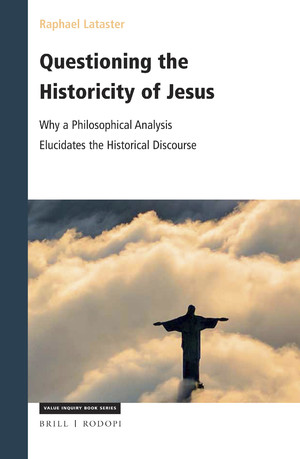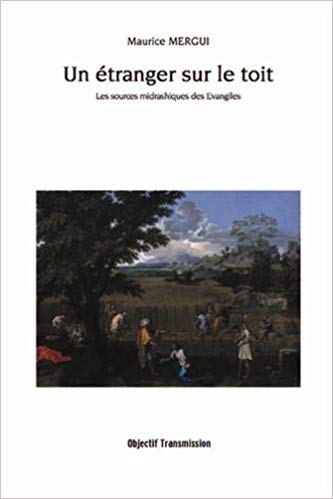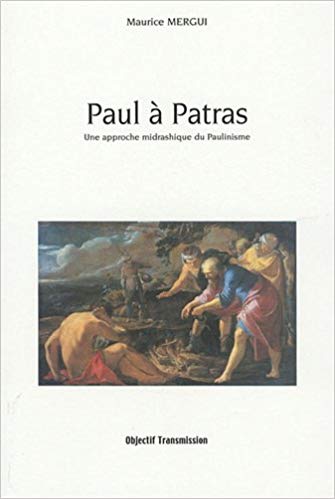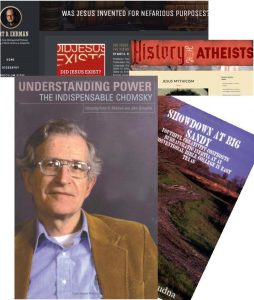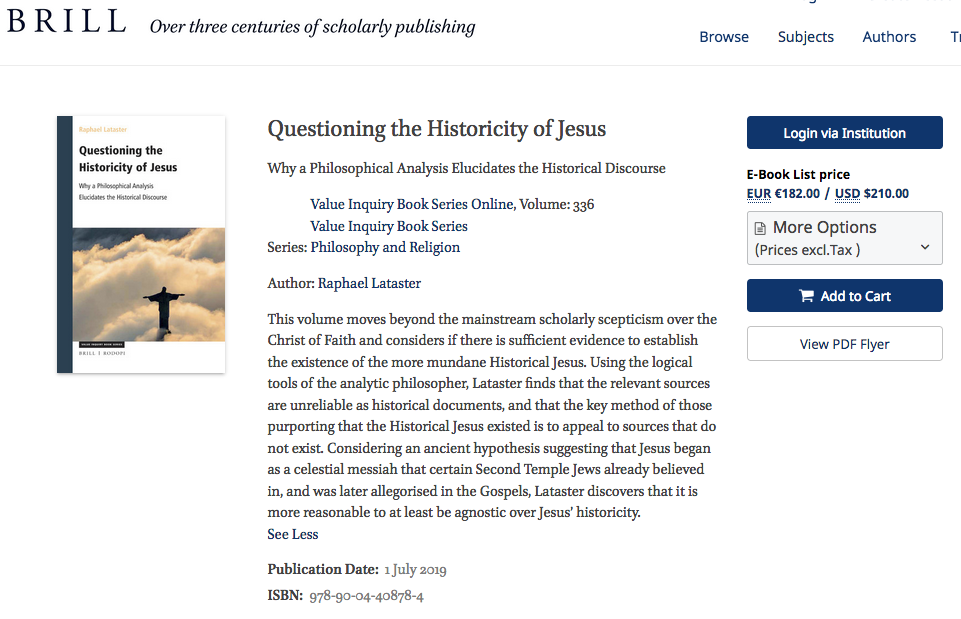 The title is “a” history because it is an interpretation built on detailed argument that is presented for consideration by Seth Sanders in From Adapa to Enoch, a book sent to me for blog discussion by the publisher Mohr Siebeck.
The title is “a” history because it is an interpretation built on detailed argument that is presented for consideration by Seth Sanders in From Adapa to Enoch, a book sent to me for blog discussion by the publisher Mohr Siebeck.
I’m drawing to a close my reading this book and now come to chapter 6 with “Who is Like Me Among the Angels?” as the first part of its heading. A primary concern of the chapter is that we set aside Western ideas of dualism and explore a quite different thought-world behind ancient texts, including those we know “too well” in both the Old and New Testaments.
The chapter title is taken from the Self-Glorification Hymn from Qumran and later in the post I will outline the arguments for interpreting that hymn as intended for recitation by mere mortals like us, though ones instructed thoroughly in divine wisdom.
Baal
But first, the history. We begin with the Ugaritic (Canaanite) myth of Baal dating centuries before Judean times. An opportune moment came for would-be usurpers when Baal left his throne to journey to the underworld. The first contender failed because he was too weak: he could not run as fast as Baal or wield Baal’s lance. The second contender did not “measure up” to Baal, literally: sitting on Baal’s throne his feet did not reach the footstool and his head did not reach the top of the throne. (Measurement was an important signifier: note the details of measurements set out in Ezekiel, Enoch, Revelation.) This is a myth narrated in the third person: Baal did this, Athtar did that, etc.
Thereupon Athtar the Terrible
ascends the heights of Zaphon,
sits on Mighty Baal’s seat.
(But) his feet do not reach the footstool,
his head does not reach the top (of the seat).
(To this) Athtar the Terrible responds:
“I will not reign on the heights of Zaphon!”
Athtar the Terrible descends,
he descends from the seat of Mighty Baal,
and reigns over the earth, god of it all.
(Adapted from Sanders, p. 215)
The Light-Bringer (Isaiah)
Next, compare Isaiah’s myth of Lucifer, a myth generally thought to have derived from the sort of myth we read of in the Baal epics.
How you have fallen from heaven,
morning star, son of the dawn!
You have been cast down to the earth,
you who once laid low the nations!
You said in your heart,
“I will ascend to the heavens;
I will raise my throne
above the stars of God;
I will sit enthroned on the mount of assembly,
on the utmost heights of Mount Zaphon
I will ascend above the tops of the clouds;
I will make myself like the Most High.”
(Isaiah 14:12-14)
The idea of becoming like the supreme god means ascending to the throne of god but results in being brought down to earth. (Here we have a myth narrated in the second person, addressing “you”.) In Isaiah the myth appears to express a wish for God to punish the arrogance of the power (presumably Babylon, some would argue Assyria) that would exalt itself in such a way.
The Light-Bringer (Ezekiel – a myth of wisdom)
Ezekiel sees an interesting development of this myth:
“‘Therefore this is what the Sovereign Lord says:
“‘Because you think you are wise, as wise as a god,
I am going to bring foreigners against you, the most ruthless of nations;
they will draw their swords against your beauty and wisdom
and pierce your shining splendor.
They will bring you down to the pit,
and you will die a violent death in the heart of the seas.
Will you then say, “I am a god,” in the presence of those who kill you?
You will be but a mortal, not a god, in the hands of those who slay you.
(Ezekiel 28:6-9)
Here again the “light-bringer”, Lucifer, exalts himself to the status of God and is once again mercilessly punished for his arrogance. But the significant development here is that it is not size or power that the light-bringer boasts is what makes him as god, but his wisdom, his learning.
Moses
 Let’s backtrack now to Moses who in the story in Exodus did indeed become “like God” after time spent in the presence of God:
Let’s backtrack now to Moses who in the story in Exodus did indeed become “like God” after time spent in the presence of God:
When Moses came down from Mount Sinai with the two tablets of the covenant law in his hands, he was not aware that the skin of his face was radiant (qaran) because he had spoken with the Lord.
(Exodus 34:29)
The word for radiant can also be understood as “horns” so it is interesting to note a Babylonian astronomy text with the same ambiguity:
If the sun’s hom (si) fades and the moon is dark, there will be deaths, (explanation:) in the evening watch, the moon is having an eclipse (and in this context,) si means “hom,” si means “shine.”
As was discussed in the earliest posts of this series such a shining or glory is something that can be added to, placed upon, taken or stolen from, a person like a garment, clothing, a crown, a sword. It was bestowed upon a Mesopotamian king when he ascended the throne.
* The Akkadian word is qarnu, cognate with the Hebrew qrn root we read in Exodus 34.
It explains that what he sees is an eclipse and that when he reads the Sumerian word si in the base text, “si means ‘horn,’* and si also means ‘shining.’” After reading the commentary, the person who sees the thin shining rim of the sun should interpret both visual and written signs as simultaneously horn and light. A second commentary adds that the lemma means “‘to daze,’ si means ‘to mask,’ si means ‘shining,’ si means ‘radiance,’ si means Tight.’”
And Mummu, the counsellor, was breathless with agitation.
He split (Apsû’s) sinews, ripped off his crown,
Carried away his aura and put it on himself.From
Enuma Elish I:66-68
Here the range of associations with “horn” is extended to the affective – the word translated “be dazed” can also mean “be numb with terror” – and the physical: light can mask, cover over, and block things like a fog. The phenomenon unifies astronomy, myth, and politics. This spectrum of associations is embodied in the Mesopotamian mythological object called the melammu, a blinding mask of light. The melammu is the property of gods, monsters, and the sun, and one is conferred by the gods on the king at his coronation. This mask of light is thus cosmic, physical, and political at once, a somatic mark of divine rulership, and it is external to the body, even alienable, as the theft of Mummu’s melammu in Enūma Elish (I 68) shows. A melammu can be stolen, but it can also be newly conferred on someone.
This mythic pattern provides the most straightforward model for understanding what happened to Moses’ face: it is not the face itself but its surface, the skin, that radiated. Moses’ physical proximity to the source of revelation added a new layer to his appearance, a physical mark of inhumanity. The Israelites feared contact with him because of his divine persona.
(Sanders, 209-210)
Moses was deemed unique for acquiring some of the glory, the radiance, of God as a consequence of being in his presence for a prolonged period.
- “You have made my face to shine” (1 QHa 11:4).
- “You have made my face to shine by Your covenant” (1QHa 12:6).
- “by me You have illumined the face of the Many ( רבים ) and have strengthened them uncountable times, for You have given me understanding of the mysteries” (1QHa 12:28).
- “You have exalted my horn ( קרני ) on high. I shine forth in sevenfold light ( אור ), in l[ight which] You have [established for Your glory ( בבודכה ).” (1QHa 15 26-27)
- “by your glory ( כבוז־כה ), my light (אורי) shone forth.” (1QHa 17:26)
But the concept was established. We find a strong interest in the light-transformation of those learned in God’s wisdom in the Qumran (Dead Sea Scrolls) literature. Could not others come to reflect the light that had shone from Moses? Certainly, Moses’ light was pale compared to God’s, and the scribe’s light would be less still, presumably, but still possible.
In Mesopotamian versions of this mythic pattern, the divinized being is not unique; he is merely the incumbent of a role.
Qumran liturgy manifests a fascination with adopting this illuminated role. Here sectarians who recited the standard set of Hodayot [Thanksgiving] prayers meditated regularly on the possibility of acquiring a shining face, and even of God raising the hom/radiance of the speaker. . . . .
If the language allows the speaker to invoke the transformed state of Moses, it also evokes more broadly a state of enlightenment characteristic of the ideal sage.
(Sanders, 210)
Daniel Transforms Isaiah’s Servant into a Role for All Enlightened Ones
Continue reading “Becoming Like God: A History”
Like this:
Like Loading...

